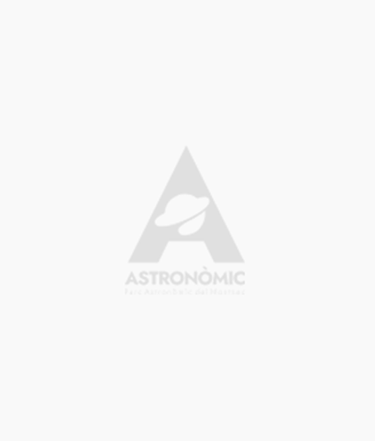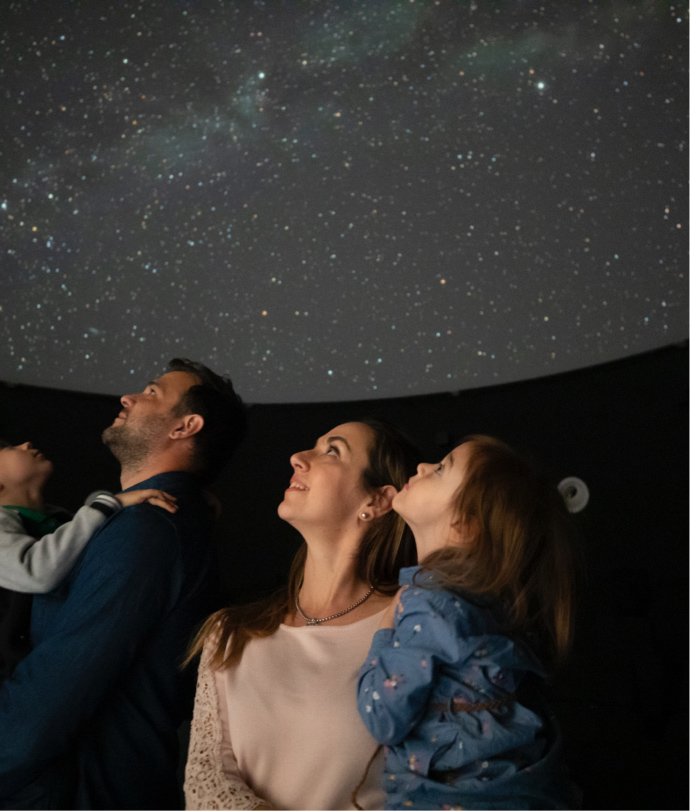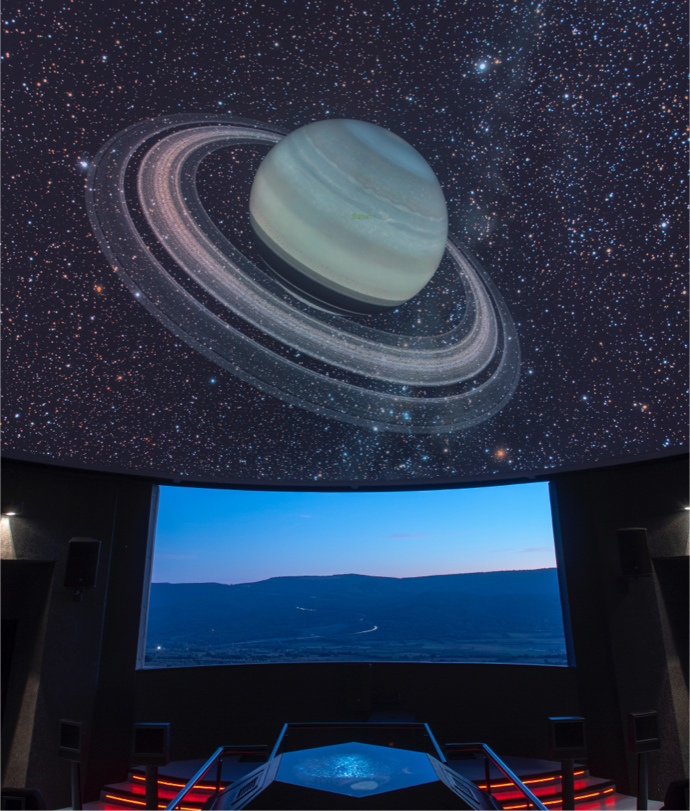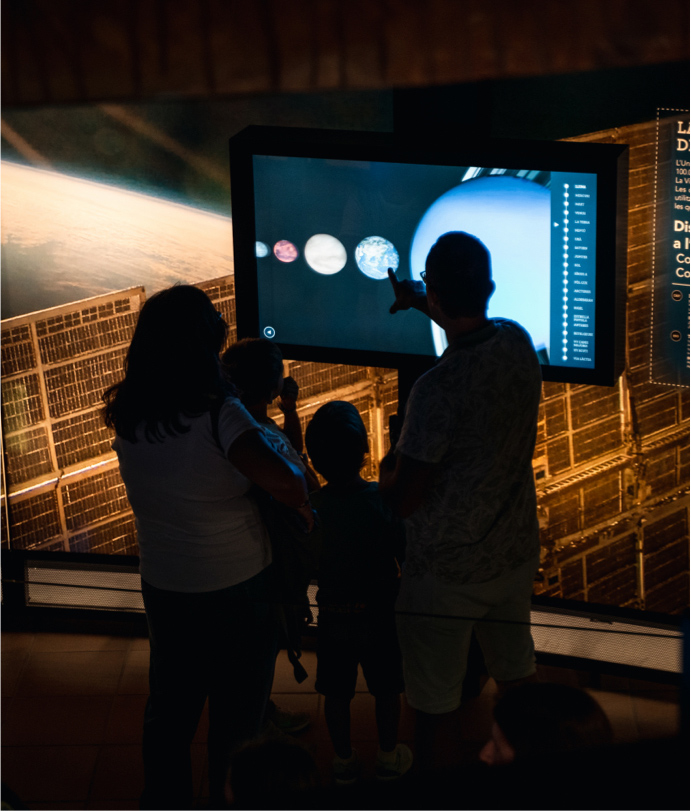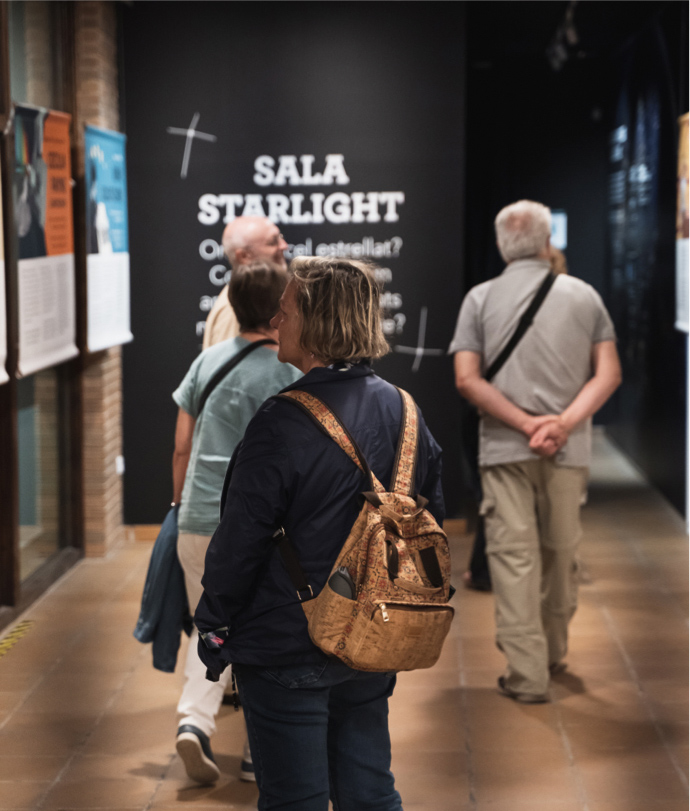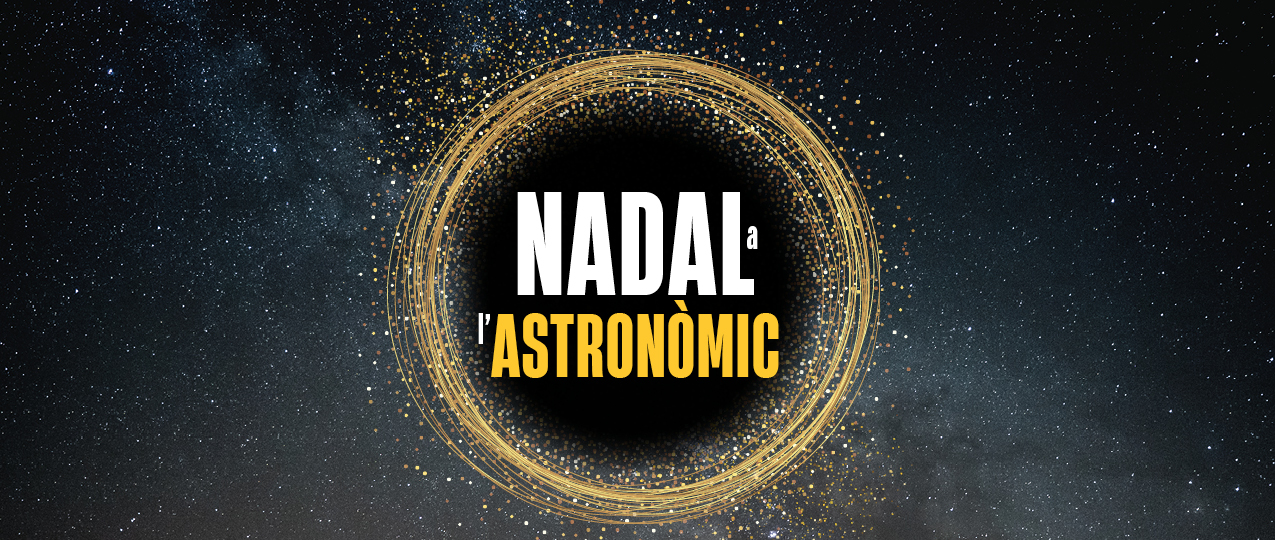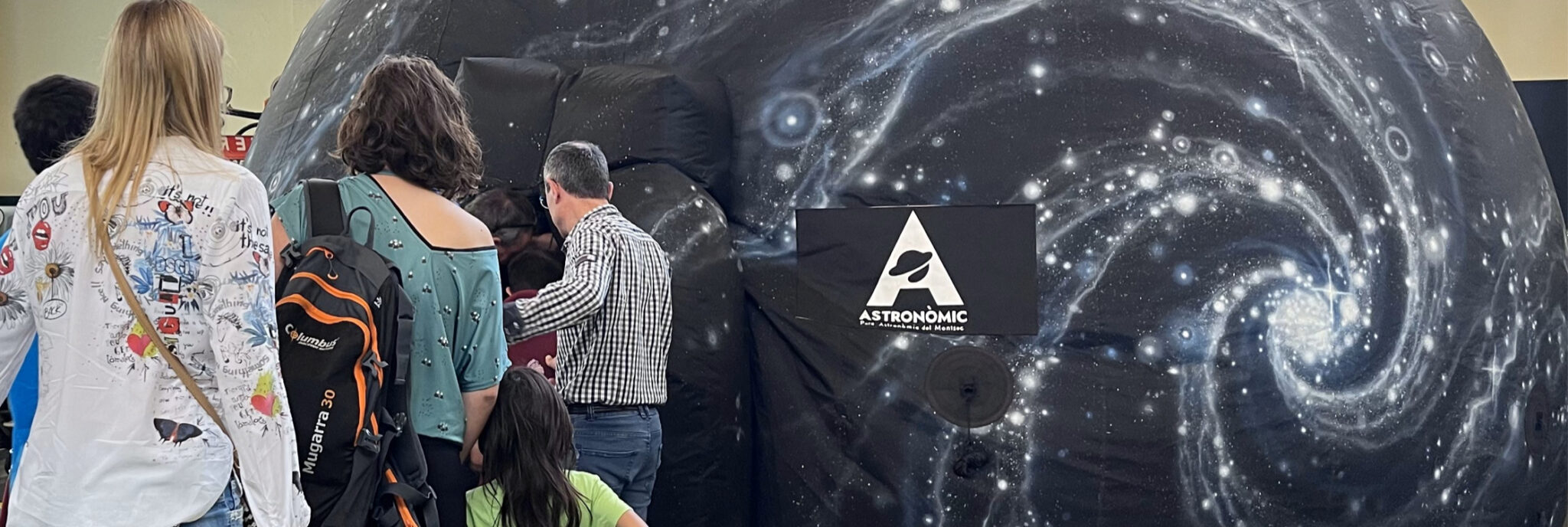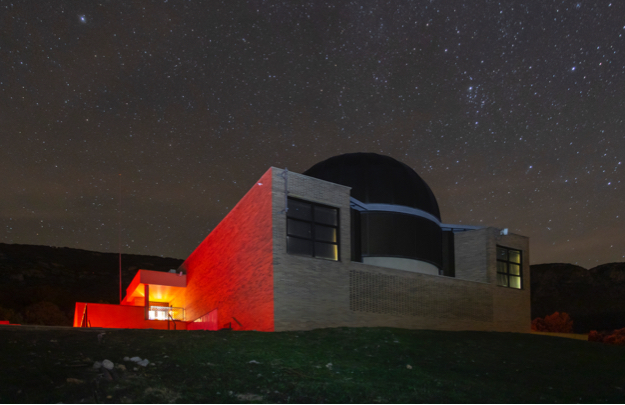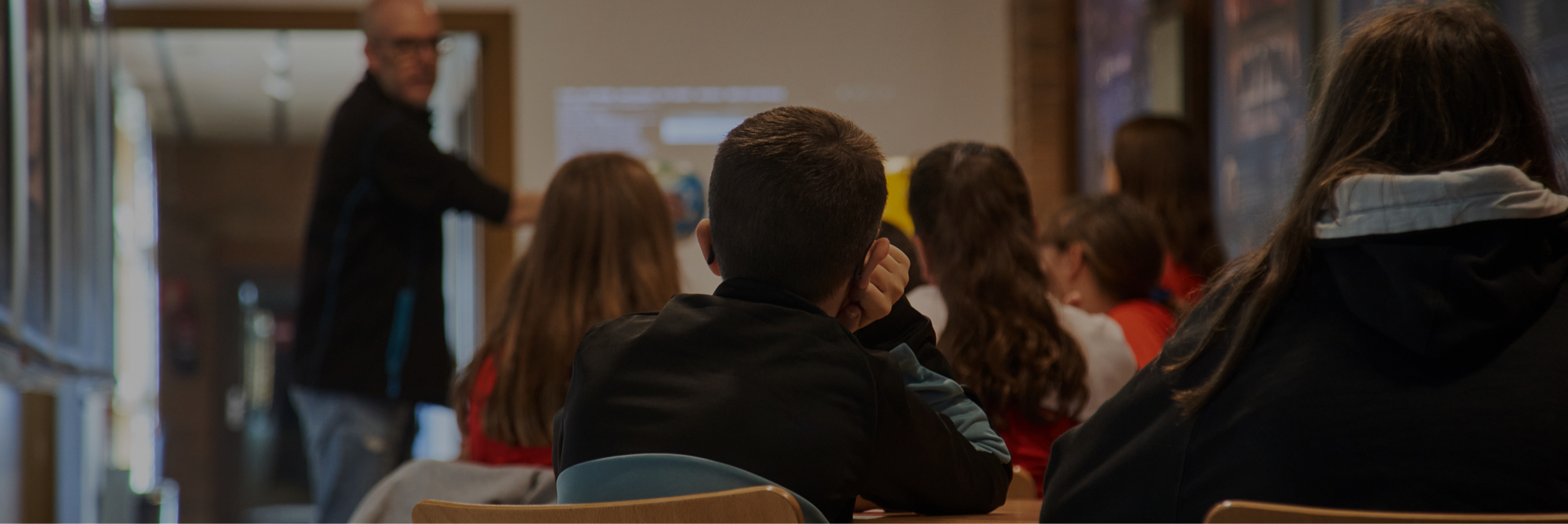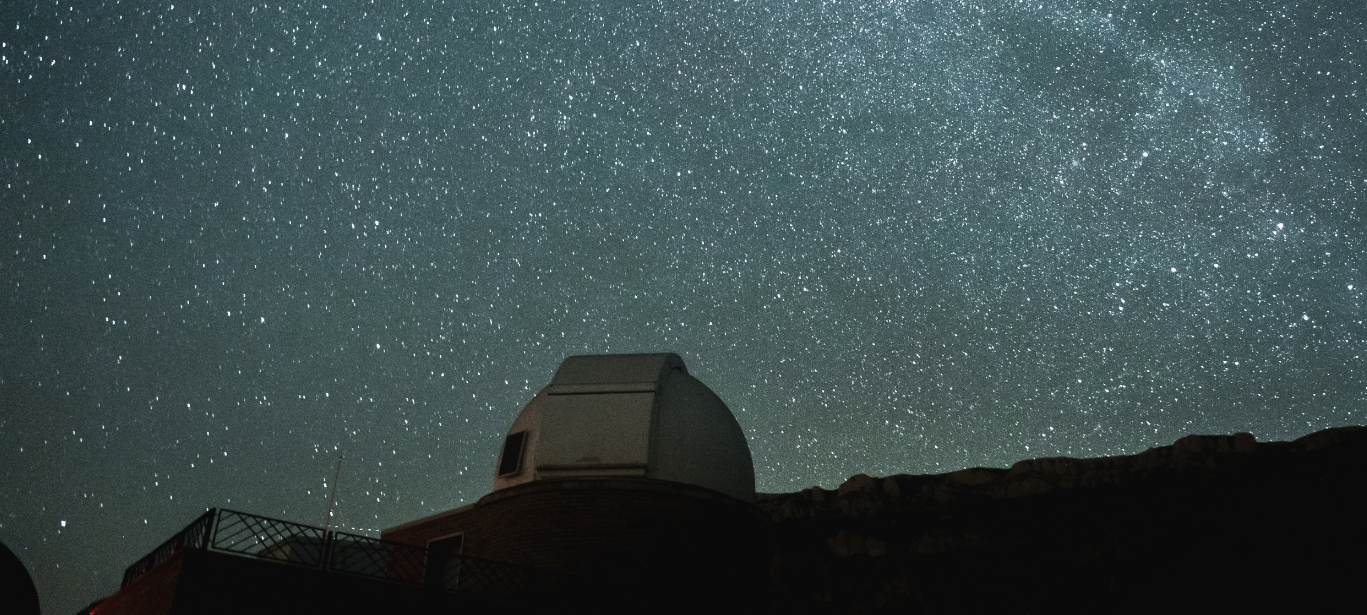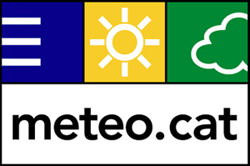Primary education (1st cycle)
Planetarium sessions
The planetarium session consists of several parts. Initially, we make an astronomical projection6 and then we explain the sky with the simulator. We will see the planets and stars visible that night and travel back in time to observe how their positions change over the hours and days. We will also focus on the constellations, figures that ancient civilizations drew in the sky and that have reached our days. We will also travel outside the Earth to see the Sun and the planets that make up the Solar System more closely. Finally we will contemplate the secret that hides the planetarium and that makes it unique in the world!
Below you have a brief summary of the projections you can choose:
3, 2, 1 LIFTOFF!
A group of hamsters live in the middle of the mountains of junk in a landfill.
Among them stands out Elon, a hamster who really likes science, unlike his companions who don’t take it very seriously. One fine day something mysterious from outer space falls into the landfill.
Inside the crater formed by the impact is a robot that has fallen from the spaceship in which it was travelling. Putting his scientific knowledge to the test, Elon must find a way to return the robot to the spaceship before it’s too late.
POLARIS
The poles of planet Earth are very cold areas and where almost no sunlight reaches them during the winter months. What is the cause?
Is it the same on other planets? On board the ship Polaris, accompanied by Vladimir the bone and James the penguin, we will discover what happens on the other planets of the Solar System and, applying the scientific method, we will try to find an explanation that answers our questions.
BEYOND THE SUN
One night, when Celeste goes to sleep, she receives an unexpected visitor. It is Moon, who knows many of the secrets of the Universe. with
they will discover that, beyond the Solar System, we can find many other planets that we know as exoplanets. We will see
how they can be detected, what elements characterize them and other curiosities about these distant and mysterious objects.
LUCÍA, THE SECRET OF FLYING STARS
Vladimir the bear and James the penguin begin a new adventure aboard their spaceship, Polaris. Target: the aurora borealis. Well, one
an unexpected impact on the ship and a landing in the middle of the jungle will raise new questions. What they are and what they are about
meteorites made? Why do shooting stars shine? Back on board the Polaris and with a new companion they will start a new journey through the Solar System to try to answer these questions applying, as always, the scientific method.
HAZELNUTS
Once upon a time, there was a sky full of wonderful planets, and on these planets there were the most delicious hazelnuts in the universe. At least, that’s what two greedy squirrels, Nino and Lilli, think. But are hazelnut trees so big in other places? Our squirrels will do everything they can to get off Earth and answer these questions, but León, the old owl, will prefer to take them to his telescope and show them exactly what awaits them on these planets. In this half-story, half-puppet show, we will address several topics: that of the climate of each planet, but also that of the immense luck that life has had on Earth. It is the consequence of a whole series of improbable events that have shaped our planet and contributed to the emergence of life.
Observations
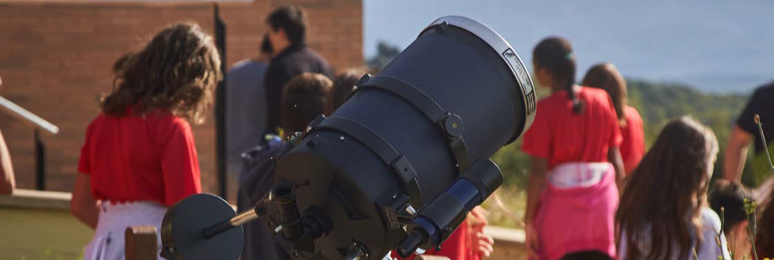
OUR STAR THE SUN (SUN OBSERVATION)
During the day the Sun warms us and illuminates our surroundings. But what is the Sun like? Are we far or near? Is it big or small? What is its color? With the devices we have in our center we will answer all these questions.
We will also be able to see if there is a sunspot or if at that moment there is a flare in the Sun.
THE NIGHT OF THE STARS (NIGHT OBSERVATION)
When it’s night in Montsec, the best sky in Catalonia, we can observe the Moon, planets, stars and other more distant and mysterious objects in great detail. By combining observation with the naked eye and the use of telescopes we will get closer to discovering the night sky.
Workshops
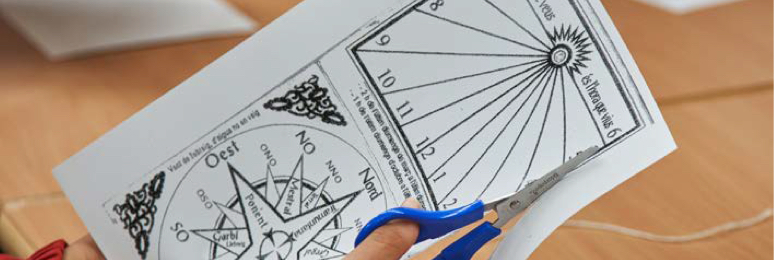
LIFTING ROCKET
5, 4, 3, 2, 1 action!!! In this activity we will discover details and curiosities about rockets and we will fly some of them propelled by water and air. All children can enjoy the experience of taking off their first rocket.
WE MAKE CRATERS!!!
If we look at the Moon, either directly, with the help of a telescope or through a photograph, we will see that its surface is irregular, with lighter and darker areas. We will also observe other somewhat mysterious areas, the craters. Produced by the impact of meteorites on the lunar surface, we will reproduce this phenomenon on a small scale and in a very fun way with homemade materials.
THE SOLAR SYSTEM IN THE ROOM
The Earth, the planet we live on, is just one of the objects we have in the Solar System. The Sun, planets such as Venus, Mars, Jupiter and Saturn or satellites such as the Moon hide very interesting details. With the help of images we will have to guess, for example, which planets are rocky and which are gaseous, which planets have more satellites or also which are the warmest and which are the coldest among many other details that we can discover!
